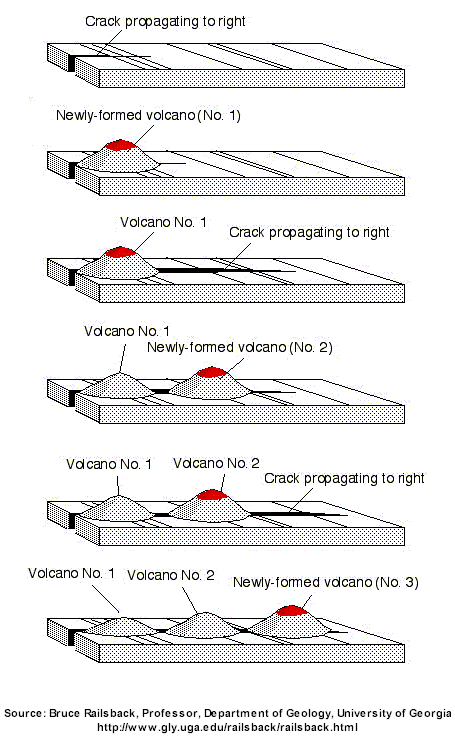Garrotxa Volcanism: Propagating Crack or Plumeless Model
The Garrotxa alkaline volcanoes occur along a series of pre-existing fault lines and there is a increasing body of theory that suggests this is not as a result of 'hot spots' or deep-seated magma plumes. Volcanism requires both a source of melt (apparently without exceptionally high temperatures) and weaknesses in the Earth's surface, to allow it to escape. The plume hypothesis requires that plate movements are driven by two independent modes of convection - plate tectonics and plumes. The former is driven by forces at plate boundaries - ridge push and slab pull, and the other is driven by heat from the Earth's core. The new theory suggests that only one of these is needed - plate tectonics - with plate movements creating the fault lines that act as 'escape points' for magma from the upper mantle.
Professor Bruce Railsback (University of Georgia) has developed these ideas in a series of six diagrams below, with the youngest (and largest) volcanoes found in the direction of a propagating crack. Plate motion may happen, but it is not essential to this model.
|
|
The Garrotxa volcanoes do not show a clear age-direction relationship required by Professor Railback's Propagating Crack model. However, stretching and thinning of the crust in the western Mediterranean resulting from plate movements has lead to a series of cracks developing within the Amer-Brugent fault system. These lines of weakness would provide the conditions for alkaline magma to force its way from the upper mantle to the surface.

